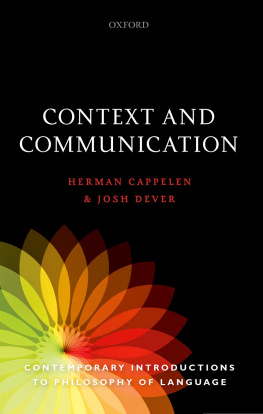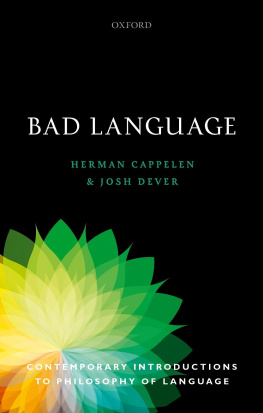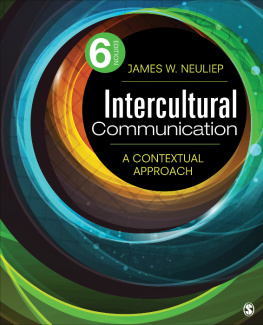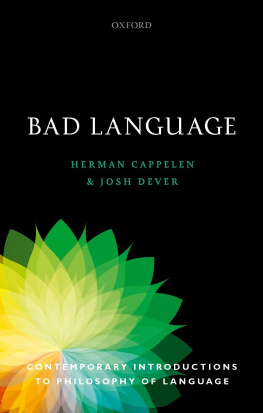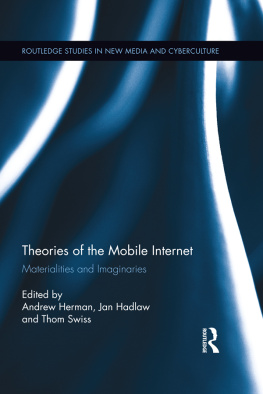Cappelen Herman - Context and Communication
Here you can read online Cappelen Herman - Context and Communication full text of the book (entire story) in english for free. Download pdf and epub, get meaning, cover and reviews about this ebook. City: Oxford, year: 2016, publisher: Oxford University Press, Incorporated, genre: Children. Description of the work, (preface) as well as reviews are available. Best literature library LitArk.com created for fans of good reading and offers a wide selection of genres:
Romance novel
Science fiction
Adventure
Detective
Science
History
Home and family
Prose
Art
Politics
Computer
Non-fiction
Religion
Business
Children
Humor
Choose a favorite category and find really read worthwhile books. Enjoy immersion in the world of imagination, feel the emotions of the characters or learn something new for yourself, make an fascinating discovery.
- Book:Context and Communication
- Author:
- Publisher:Oxford University Press, Incorporated
- Genre:
- Year:2016
- City:Oxford
- Rating:5 / 5
- Favourites:Add to favourites
- Your mark:
- 100
- 1
- 2
- 3
- 4
- 5
Context and Communication: summary, description and annotation
We offer to read an annotation, description, summary or preface (depends on what the author of the book "Context and Communication" wrote himself). If you haven't found the necessary information about the book — write in the comments, we will try to find it.
Context and Communication — read online for free the complete book (whole text) full work
Below is the text of the book, divided by pages. System saving the place of the last page read, allows you to conveniently read the book "Context and Communication" online for free, without having to search again every time where you left off. Put a bookmark, and you can go to the page where you finished reading at any time.
Font size:
Interval:
Bookmark:


Great Clarendon Street, Oxford, OX2 6DP, United Kingdom
Oxford University Press is a department of the University of Oxford. It furthers the University's objective of excellence in research, scholarship, and education by publishing worldwide. Oxford is a registered trade mark of Oxford University Press in the UK and in certain other countries
Herman Cappelen and Josh Dever 2016
The moral rights of the authors have been asserted
First Edition published in 2016
Impression: 1
All rights reserved. No part of this publication may be reproduced, stored in a retrieval system, or transmitted, in any form or by any means, without the prior permission in writing of Oxford University Press, or as expressly permitted by law, by licence or under terms agreed with the appropriate reprographics rights organization. Enquiries concerning reproduction outside the scope of the above should be sent to the Rights Department, Oxford University Press, at the address above
You must not circulate this work in any other form and you must impose this same condition on any acquirer
Published in the United States of America by Oxford University Press 198 Madison Avenue, New York, NY 10016, United States of America
British Library Cataloguing in Publication Data
Data available
Library of Congress Control Number: 2015956473
ISBN 9780198769910 (hbk)
9780198733065 (pbk)
ebook ISBN 9780191047428
Printed in Great Britain by Clays Ltd, St Ives plc
Links to third party websites are provided by Oxford in good faith and for information only. Oxford disclaims any responsibility for the materials contained in any third party website referenced in this work.
We would like to thank Matthew McKeever and Joshua Habgood-Coote for invaluable research assistance. We are also grateful to Brian Rabern for trying out an early version of the book on his students and giving us feedback, to Dilip Ninan and Torfinn Huveness for advice along the way. We got helpful comment from three anonymous referees for OUP. Finally, we got good feedback from students in St Andrews and Oslo who also used the book for their philosophy of language classes.
This book is about the various ways in which what we say (and assert, ask, and think) depends on the context of speech and thought. The period since 1970 has produced a vast literature on this topic, both by philosophers and linguists. It is arguably the area of philosophy (and linguistics) where most progress has been made over the last forty years. The goal of this book is to provide students with an introduction to some of the central data, questions, concepts, and theories of context sensitivity.
The some part of the previous sentence is important. This book is not meant to be exhaustive. The amount of work done by philosophers and linguists on this topic is immense. To cover it all, we would have had to write an extremely long and unwieldy book. So we dont aspire to comprehensiveness. Instead, we have picked some topics, views, and arguments that we think are important, interesting, and instructive. Our hope is that a reader who has understood and engaged with this selection of material will be in a good position to start engaging with much of the work we dont cover in this book.
The book is written to be accessible to someone with no prior knowledge of the material or, indeed, any prior knowledge of philosophy. It can be used as part of a philosophy of language course or as part of a general introduction to philosophy.
We initially set out to write a single book that could serve as an introduction to philosophy of language. We gave up. We now think that goal is too ambitious for any one book. There is simply too much interesting work done within this field over the last 100 years to cover it all (or even most of it) in a single book. A book that tried to do that would inevitably be so superficial that it would fail to convey to the readers how rich, complex, and important these topics are. To do justice to the field we have set out to write a series of introductions to philosophy of language, each one covering an important topic, each one of which would be a way into the field as a whole. These books aim to provide systematic introductions to important questions, data, theories, and arguments. Those looking for a history of the discipline should look elsewhere.
Here is an overview of the various chapters, and a guide to how to read the book.
The first part concerns how to reconcile two facts about language and language use. On the one hand, most of the words we use appear to be sensitive to the context of speech. What we say to each other is shaped by the contexts we are in in when we speak, in ways that are complex and difficult to understand. On the other hand, language is a device for transmitting and storing information. If the information we get and transmit is sensitive to context in ways that are massively complicated and hard to understand, it is difficult to see how information can be shared between different contexts. The more we focus on the context sensitivity of what we say, the more it looks like what we say ends up being tied to the context of speech and it becomes hard to see how that information is moved between contexts. The first chapter in Part I outlines the evidence of context sensitivity. The second chapter outlines the arguments and evidence for stability between contexts. The third chapter considers some of the proposals for how to reconcile variability and stability: how to ensure shared information across contexts despite massive context sensitivity.
In the first part of this book, we focus primarily on a puzzle about communication. We begin with some observations about the meanings and truth values of sentences, but from there move on to discuss what people say with and understand by uses of those sentences. In the second part of the book, we turn to looking in more detail at what a theory of meaning for a language could be. Our main goal here is to set out and compare two major approaches to a theory of meaning for context-sensitive language, one originating in the work of David Kaplan and the other in David Lewis work. The shift to thinking more about the functioning of language and less about the use of that language by speakers means that we will need to think in more detail about the internal functioning of the language: how the meanings of whole sentences are determined by the meanings of the words that make them up.
Throughout this book, the notion of a context plays a central role. In the final part of the book we turn directly to the question of what a context is and how it does its work. We start by distinguishing two questions: (i) What is it to be in a context? (ii) How does context determine the meaning of words? We then consider two views of contexts to see how they can respond to these questions. We next turn to a more detailed discussion of what ingredients a context must provide to account for gradable adjectives like rich, the second-person pronoun you, and other expressions. In the final chapter, we consider how speech itself can create contexts, how contextual accommodation and negotiation works, and how asymmetric power relations affect contextual negotiations. We conclude the book by presenting a radical line of thought: because to negotiate over what the word legal means is to negotiate over what is or should be legal, contextual negotiation is not just negotiation over the meaning of words, but also about what the world is or should be like.
Font size:
Interval:
Bookmark:
Similar books «Context and Communication»
Look at similar books to Context and Communication. We have selected literature similar in name and meaning in the hope of providing readers with more options to find new, interesting, not yet read works.
Discussion, reviews of the book Context and Communication and just readers' own opinions. Leave your comments, write what you think about the work, its meaning or the main characters. Specify what exactly you liked and what you didn't like, and why you think so.

